Video Premiere & Web-Exclusive Interview
Artist: SENRI OE
Video: “Out of Chaos”
JAZZ PIANIST SENRI OE RELEASES LETTER TO N.Y.
Composed and produced entirely in quarantine in his New York City apartment—the new album expresses Senri Oe’s love for NYC during a time of worldwide reflection. This powerful recording captures the eclectic array of the city’s musical energies.
Oe’s Letter to N.Y. (2021) is clearly a love letter to New York City. He has found positive inspiration in the midst of the chaos of quarantine. His journey to this time and place in his music—and to this particular album—is truly remarkable.
As a pop superstar in Japan in the 80s and 90s, who grew up listening to the sounds of Billy Joel and Carpenters, Oe did a complete turnabout on his career after a backing band member, and friend of his, suddenly passed away. At that point, he decided that life was too short and wanted to focus on what was important in his life—his first love—jazz.
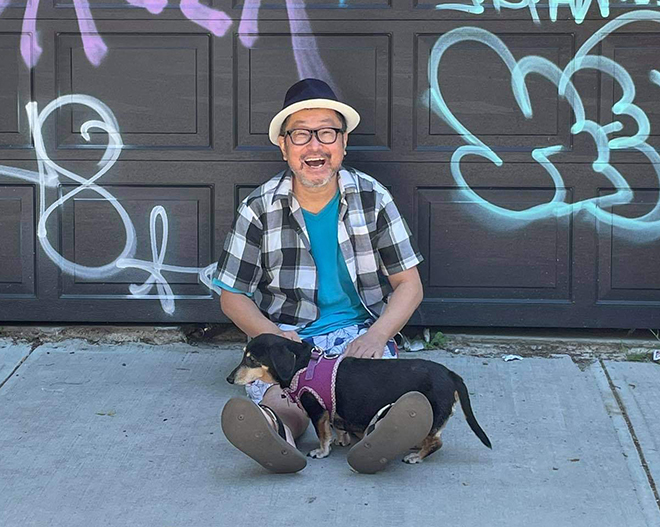
The pulse of rhythms coursing through this album is an outpouring of the love, compassion and togetherness that is an integral part of Senri Oe’s view of life. Fittingly released on PND/Sony Masterworks two days before the start of the 2021 Tokyo Olympic Games, if music was an event at these Games—Senri Oe would have received a medal for his album Letter to N.Y.
Oe left Japan and his legion of pop fans to grab a piece of the American Dream. He headed to New York City to study at the School of Jazz at The New School. Since 2008, he has released seven jazz albums: Hmmm (2020, a jazz trio album), Boys & Girls (2018), Answer July (2016), Collective Scribble (2015), Spooky Hotel (2013) and Boys Mature Slow (2012).
The pulse of rhythms coursing through this album is an outpouring of the love, compassion and togetherness that is an integral part of Senri Oe’s view of life. Fittingly released on PND/Sony Masterworks two days before the start of the 2021 Tokyo Olympic Games, if music was an event at these Games—Senri Oe would have received a medal for his album Letter to N.Y.
Oe says “I wrap the album with the simple concepts of ‘Love’ and ‘Togetherness’ to reflect an important reality that we’ve all learned during this challenging time—the fact that when we’re left alone to face life’s greatest challenges, we realize the most important things are not money and fame but the people we love and want to be with most.”
We talked with Senri Oe about his fascinating musical journey, his approach to creating jazz in solitude during this unique time, how music can bring people together, how he remains eternally hopeful and how his positive outlook on life inspires others to follow their own path to find peace.
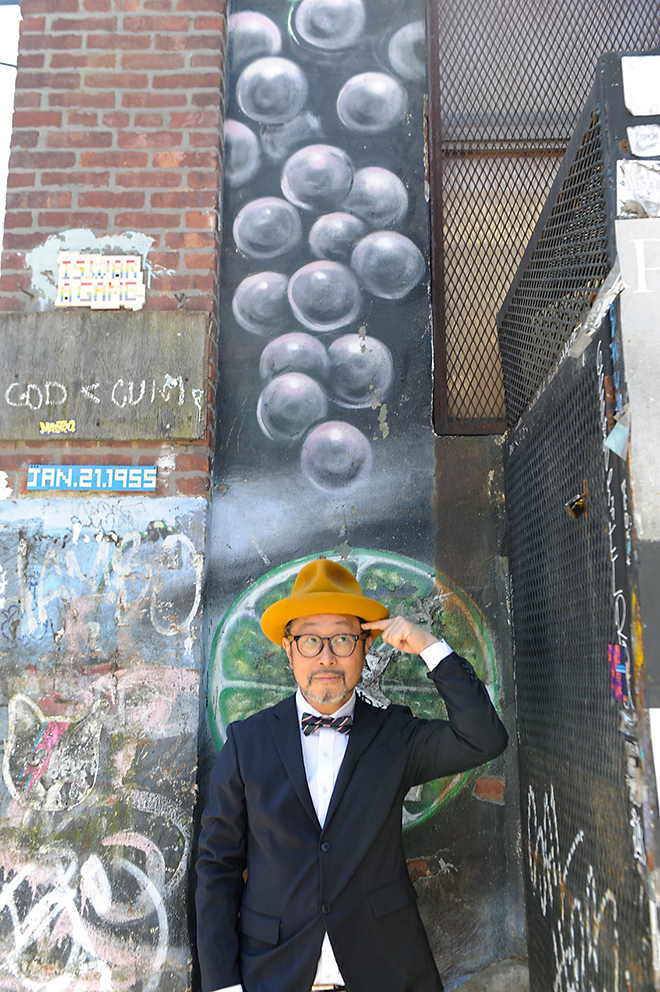
SENRI OE Interview
with M Music & Musicians magazine publisher, Merlin David
How did the idea for the song “Out of Chaos” come to you?
It was the first song I wrote when I decided to make this home-recorded jazz. The imagery in my mind was the electric Miles Davis in the 70s. I connected my Casio mini keyboard to a PC without deciding the score and chord progression. On my moving day, January 15, a gas leak accident caused the heating and gas to stop in the cold winter in New York City—for two weeks. So I put on a down jacket and hugged my dog to keep warm. By that time, I was used to the pandemic. But listening to the horns of cars and people screaming outside the new environment through the window—made it crazy. When I sent this song to my co-producers in Tokyo and New York, they said it was “very good.” So I left this song as it was and continued to make the second song ”Good Morning” and then “Juke Box Love Song.”
How did you come up with the creative video concept of “Out of Chaos”?
I chose Japanese American film director Jun Shimizu, who made three videos from my previous album, Hmmm. “Out of Chaos” was written during the pandemic, so I thought this concept would be good to allow listeners to understand it immediately. I started to shoot it at home in New York City, and sent videos to Jun in Los Angeles, California. Several “Senris” appear in one scene, so I was careful not to cover the other ones. Jun told me to set the screen of the iPhone, turn it on, never touch it, leave it recording—and shoot for about 40 minutes. It was hard because I was busy changing clothes, wiping my sweat, synchronizing music and doing everything—alone. If I had one more thing to do, I would have failed. (Laughs)
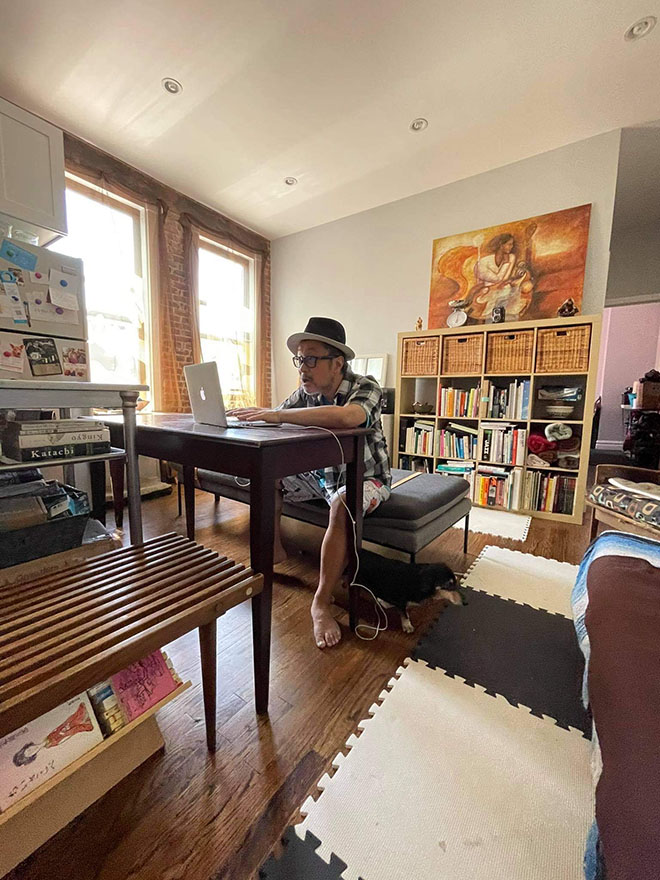
How did this seventh studio 11-track jazz album Letter to N.Y. evolve?
Jazz is improvised by meeting people—by communing with others. It’s a reaction and there is no blueprint. But this time, I had to play all of the instruments with my own fingers—there was no one else. I became Miles Davis and Jaco Pastorius—all wrapped up in one. I played alone in a fantasy world—going back and forth between the 70s, 80s and 90s. I wrote things down as I went along. The method was a discovery because I could record as much as I wanted for 24 hours/seven days a week—in a relaxed setting. There is something unique about my Casio that allows me the freedom to be more creative.
This is clearly your love letter to New York City. What is it about NYC that keeps you creative—that energizes you and your music?
The people. People who walk on the street, people who just pass each other, people who whistle, people who shout—people always give me energy. You can always hear a variety of music and languages, so your mind will always be sensitive to the sounds. I learned from the pandemic how to transform the inconvenience of having to stay at home—into creativity. I realized that there are many benefits to doing it alone—if I only devise the ingredients that I have at home to make delicious and healthy dishes. In the same way, I can create music with only what I have on my PC. I played all the digital sounds. No guests. It was a unique and deliciously wonderful experience—a tasty treat.
What instruments do you rely on?
My Casio and my Steinway—it’s a complete, whole sound. Also, my Wurlitzer and Logic Pro X.
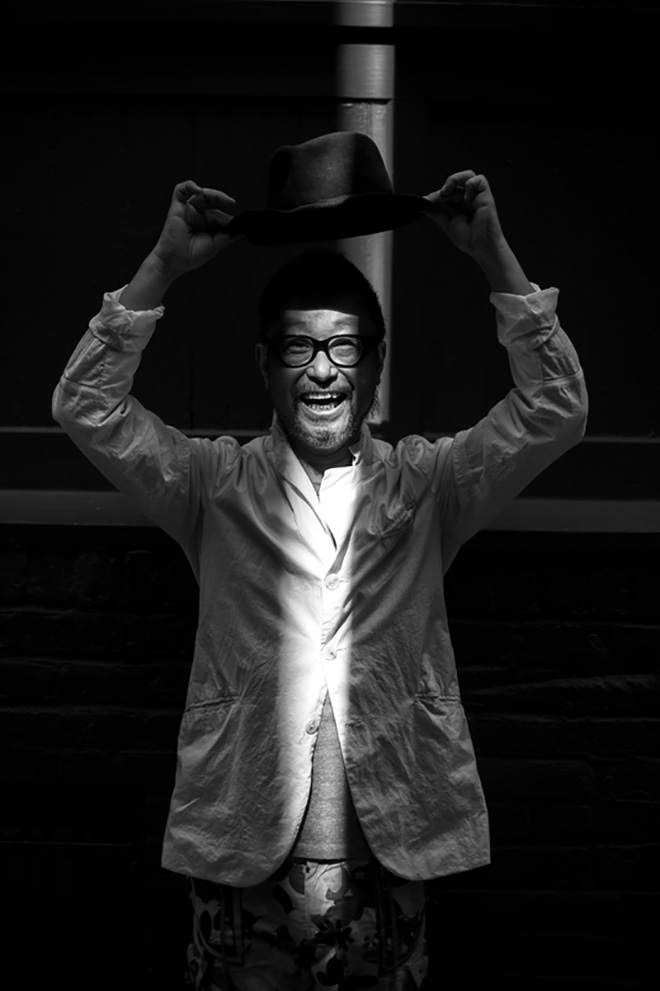
Which song are you especially glad squeaked by and made it onto this collection?
Every song has its own favorite points. It’s all jazz, but various genres of music are also mixed in. “The Street to the Establishment” basically starts with a shuffle rhythm. However, like the streets are different, you can hear Latin rhythms, mixed with other music to reach the final big circle. I love this tune.
Are there other similar examples?
“Love” uses Cuban rhythms. My long electric piano solo is not a fast-playing solo, but it has a taste and I love this so much. And “Staying at Ed’s Place” has the concept of jazz Beatles. I imagine jazz humming in the world. Everyone around the world can hum. I would like to hear everyone hum along.
What did you learn about yourself after recording Letter to N.Y.?
I learned the concept of preparing a musical score, and that jazz must be like this. The other kinds of concepts don’t make much sense. My mind is free, and I don’t see things through prejudice. I feel that one day is a condensation of my life, and I feel like I can now live life to the fullest.
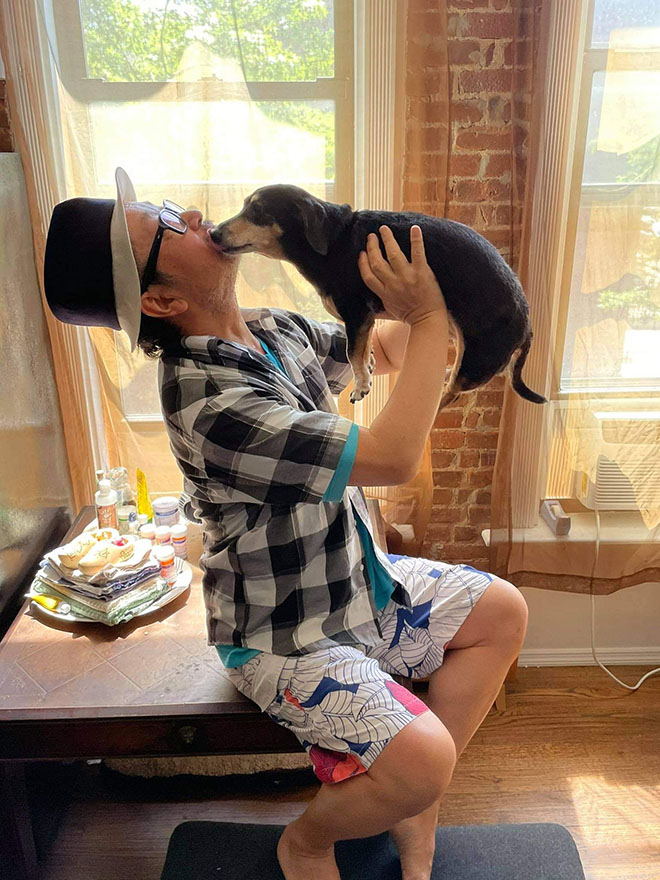
The title track “Letter to N.Y.” is a very strong, infectious track.
It starts with a wacky rhythm and tone, but I resist Charlie Parker, and put his typical musical phrase at the beginning of a melody. I imagine a person who affirms anxiety and fear, accepts good and bad things, and starts to live with a smile. It’s a strong song!
How did your life as a pop singer-songwriter inform your approach to music?
Both are music for me. So basically, I have just evolved as a simple organic musician, who came to create these new jazz compositions. However, for my fifth jazz album, Boys & Girls, I got the chance to interpret my pop 80s and 90s songs into Senri Jazz Standards. (Laughs) That experience was so huge for me—and that’s why my previous album (Hmmm) was good timing to make a trio album—and make something new to bridge those two worlds.
Do you remember the first time you heard one of your songs on the radio?
When I was 15, I heard my original tune on the radio in Osaka, Japan, my hometown. I was an amateur singer-songwriter who was trying to be a professional musician, so it was very exciting to hear my music on the radio.
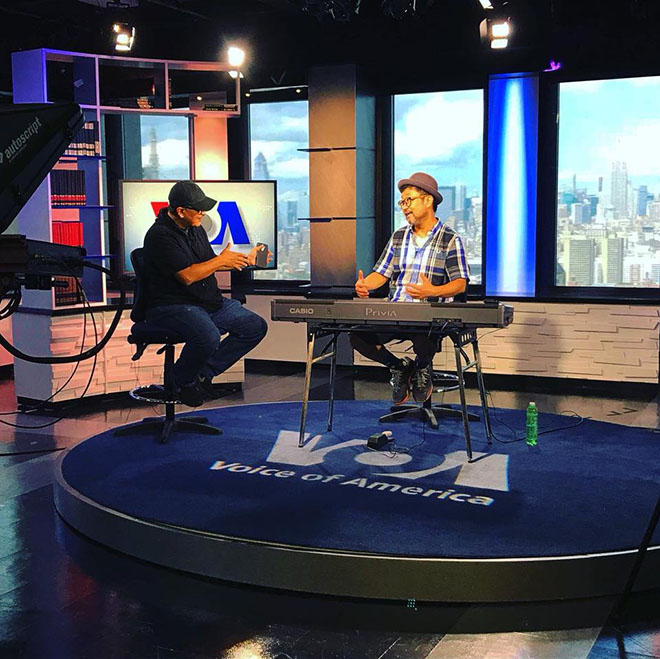
Which Top 5 Musicians inspired you to become a musician?
Yuming (J pop singer-songwriter, Yumi Matsutoya), Carpenters, Terumasa Hino (Japanese jazz trumpeter), Bill Evans, Thelonious Monk, Osamu Kawakami (my Japanese jazz teacher), Junior Mance (my jazz teacher in The New School for Jazz) and my first piano teacher Yumi Nara (she is now an opera singer in Paris).
What are your Top 5 favorite albums of all time?
Sunday at the Village Vanguard (1961)—Bill Evans Trio
Solo Monk (1965)—Thelonious Monk
Stone Flower (1970)—Antônio Carlos Jobim
Dr. Buzzard’s Original Savannah Band (1976)—Dr. Buzzard’s Original Savannah Band
Aja (1977)—Steely Dan
What is the best advice someone has given you?
Be a listener. It was advice given to me by my producer at Epic Sony Japan, who I worked with in the 80s.
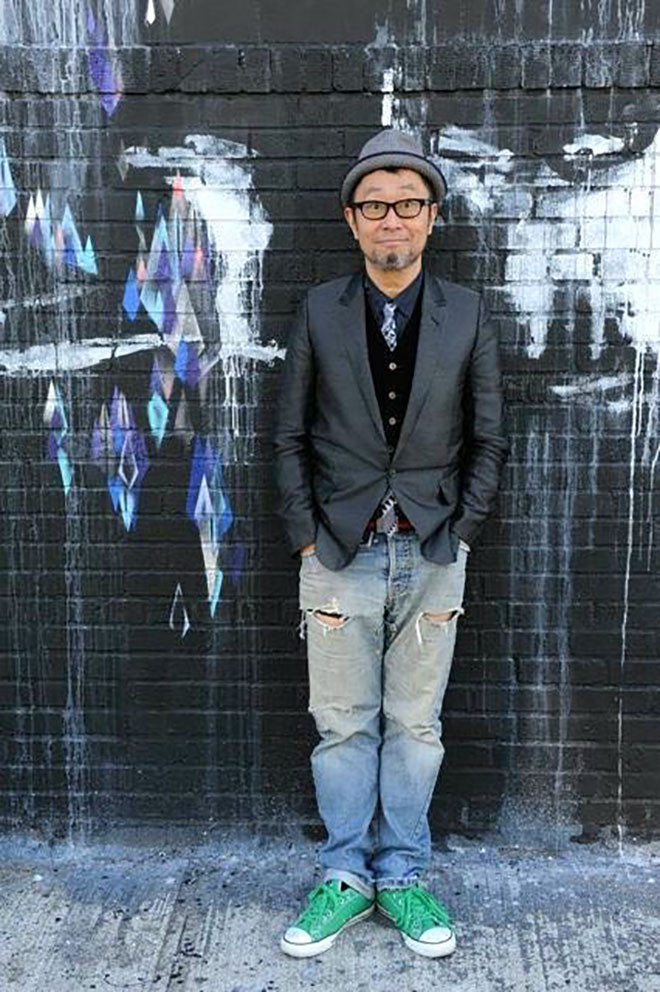
What is your advice for upcoming musicians?
Be observers. It is not about making whatever you like to create. The most important thing is to make whatever people love. Musicians can use their music and talent to bring people together.
Tell us a “pinch me” moment when you thought “Wow, this is really happening to me!”
When I saw Cedar Walton’s piano concert at Dizzy’s Club in NYC and Tony Bennett was sitting right in front of me. It was a great moment in time.
What have you learned about yourself during this pandemic time?
This time is a gift given to us—to improve our sense of consideration for others. We need to take care of our imagination. A lack of imagination sometimes leads to discrimination and hate crimes. All of that arises from ignorance and prejudice. America allows me to live with dreams and hopes. I create music as an opportunity for people to be kind and peaceful. If you take the time, you will notice magical moments within any given day. NYC is a powerful magnet. If you have dreams and hope and try to make the world better, you should be in NY because there is a lot of chemistry here in NYC.
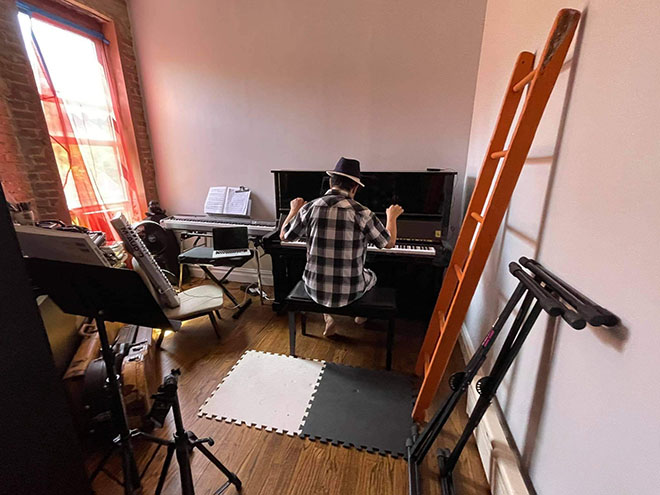
In this unique socio-political time, how do you remain hopeful?
When I see people being careful, staying home and wearing a mask when they go outside—I am hopeful. When I see the positive effects of Black Lives Matter, I am hopeful. When I see people come together to denounce Asian Hate Crimes, I am hopeful. We all have different backgrounds, but when we stop and look—we see more similarities and have more things in common that we share. It really is a beautiful thing—a beautiful world we live in.
You once said, “After this pandemic, the former world is over.” As a musician, how do you carve a new path?
The old values have disappeared. The world where money and fame rule—doesn’t work in this new post-pandemic world. For a long time, the idea that those with capitalism and money were strongly dominating the world; but more and more, types of living in individual ways will be established, and it will be simple and original. The method of pushing with force is obsolete, and more love and compassion will wrap around the world. This is my hope.
Where can new fans get more info and stay updated?
www.PeaceNeverDie.com
Twitter: https://twitter.com/1000hometown
Facebook: https://www.facebook.com/SenriOe
Instagram: https://www.instagram.com/senrioe/




comment closed